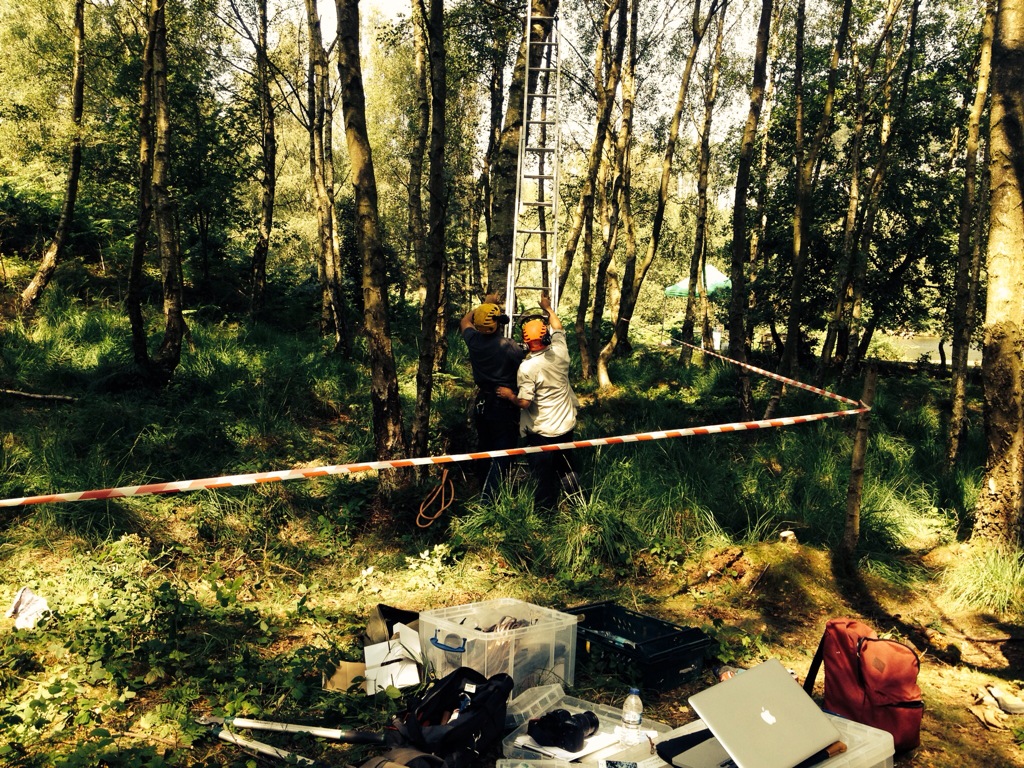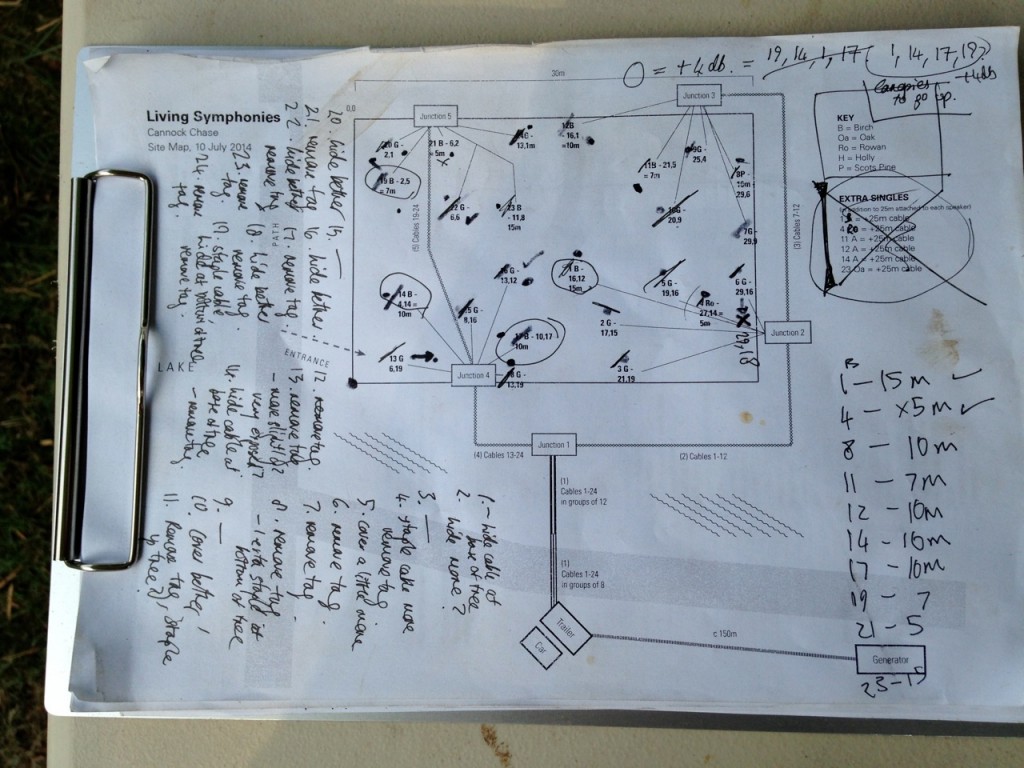Writing from Dan Richards, who visited Living Symphonies at Thetford and Cannock Chase during the summer 2014 tour.
The first time I worked with James Bulley, we recorded a holloway; arriving in the Dorset hills in gold light, setting up the Stereo Shotgun Microphone (wide-field), the Soundman Binaurals — super cardioid. The figure 8 devices to log the green tree tunnel: Zoom H4, Zoom H2 — engaged and visited at intervals that night, crawling out our Jerry-built bivvy — half-cock, half sleeping, piled in a tent slumped down in the burrow, steeped in the sounds of the wind’s play above and the bird fuss, unseen, deep cow sounds — rumpled murmurs, distant bells. The chuff and whir of a tractor’s chug, gruff throb in the valley behind us… every few hours we’d rouse and sift for sounds, resetting, saving, muttering as we moved along the ancient sunken road, spun round with trees.
Far away, months before, James had been recording violinists — smithereen arachnid flinders — transcribing beasties as free-jazz note fits, brain spread thin with things to do; throwing weird compositional shapes to make a sense of myriad lifeforms: how should Sycamore go?
All this to be knitted so the music — pointillist and shifting — sits harmonious within a scape; drawing on and out the wonder already extant. So as to be sap not sapping: of a piece with the microcosmos — sapped as James sounds on the phone… bled by the deadlines bearing down: ‘weeks scoring all night, sessions all day and then a few days editing…’
Later on, in a Midlands dusk, sat beside a foil lake with cross geese, I listen to Daniel and James attempt to get ‘Owl’ working. Hearing them walkie talkie in the gloaming — panning Owl to left and right, running Owl schematics, hammering it out — I wonder whether anybody else is up to something similar… anywhere. At all.
Next day the audience walk up the stone path from the lodge. In twilight, they enter the woods to stand or sit about the trees in various postures of contemplation. Some lean on trunks, some slump, some kneel… a child in a purple jacket runs round and round the silvered paths, flattened by innumerable feet over the days of the LS residency… the patter of her scampering feet of a piece with the myriad sounds scattered, thrown and sown in the mulch, wood, moss and canopy capillary space.
Hive reverberations; ants, mites, spiders. Soft moths, sharp wasps, low worm squirm.
Dan Richards, 2014
Dan Richards was born in Wales in 1982.
He received a BA from The University of East Anglia and an MA from Norwich Arts School.
He is co-author of HOLLOWAY with Robert Macfarlane and Stanley Donwood, published by Faber & Faber in 2013.
THE BEECHWOOD AIRSHIP INTERVIEWS, an investigation into the working methods and spaces of some of the greatest artists working today is set to be published by The Friday Project in 2015.
CLIMBING DAYS, an exploration of the writing and climbing lives of his great great aunt and uncle Dorothy Pilley and I.A. Richards, is set to be published by Faber & Faber in 2016.
Dan has written for The Times, The Quietus, and Caught By The River.
He lives and works in Bath.


